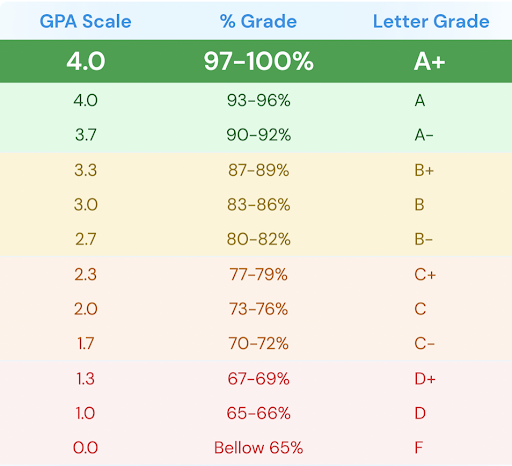-

Mrs. Marshall honors pre-calculus syllabus reflects recent changes in the Math department.
(Jayce Lay)A+ (4.0):
- Represents exceptional mastery of the course material.
- Typically earned by students who consistently excel and demonstrate outstanding understanding of the subject matter.
- May require additional assignments, projects, or assessments that go beyond the standard curriculum.
- A (3.7):
- Indicates excellent performance and a strong grasp of the material.
- Awarded to students who consistently meet and often exceed the expectations of the honors course.
- Demonstrates a high level of critical thinking and engagement with the subject matter.
- B (3.3):
- Reflects above-average performance and a solid understanding of the course content.
- Achieved by students who consistently meet the demands of the honors course but may not consistently excel at the highest level.
- Demonstrates proficiency in the subject matter.
- C (3.0):
- Represents satisfactory performance in the honors class.
- Awarded to students who meet the minimum requirements for honors but may struggle with some aspects of the material.
- Indicates a baseline level of competence.
It’s important to note that grading scales can vary by educational institution, and some institutions might have different criteria for honors classes. The suggested scale above is designed to provide finer differentiation within honors courses while maintaining a 4.0 scale for the highest level of achievement. However, it’s essential for any grading scale to be transparent, consistent, and clearly communicated to students and parents. Additionally, schools should consider the implications of the grading scale on grade point averages (GPAs) and college admissions if they choose to implement such a system.
The new 4-point grading system for honors classes, as previously outlined, is designed to provide finer differentiation and recognition of higher achievement within these courses. Let’s compare it to the traditional 4.0 grading scale to highlight the key differences:
Traditional 4.0 Grading Scale:
- A+ (4.0): Represents the highest possible grade, often reserved for exceptional performance.
- A (4.0): Represents excellent performance and mastery of the subject matter.
- B (3.0 – 3.9): Represents above-average to good performance.
- C (2.0 – 2.9): Represents satisfactory performance, meeting the minimum requirements.
- D (1.0 – 1.9): Represents below-average performance, often considered as passing but not meeting standards for honors.
- F (0.0): Represents failure, indicating a lack of understanding or significant deficiencies.
New 4-Point Grading Scale for Honors Classes:
- A+ (4.0): Represents exceptional mastery of the course material in honors classes.
- A (3.7): Indicates excellent performance in honors classes.
- B (3.3): Reflects above-average performance in honors classes.
- C (3.0): Represents satisfactory performance in honors classes.
Key Differences:
- Higher Baseline: The lowest grade in the new honors scale (C) is equivalent to a B on the traditional scale. This acknowledges that students in honors classes are expected to perform at a higher level than in standard classes.
- No D or F Grades: The new honors scale does not include D or F grades, indicating that students are expected to maintain a minimum level of competence to remain in the honors track.
- Fine Differentiation: The new honors scale provides finer differentiation within the A range (A+ and A), recognizing exceptional and excellent performance separately.
- Clearer Recognition: The new scale offers clearer recognition of honors achievement by starting at a higher baseline (C) and distinguishing between exceptional, excellent, and above-average performance.
- Alignment with Course Rigor: The new scale aligns more closely with the increased rigor and expectations of honors courses, emphasizing the importance of consistently strong performance.
It’s important to note that the choice between these grading scales depends on the educational institution’s goals, policies, and the specific needs of their honors program. The new scale is designed to motivate and reward students in honors classes while maintaining a 4.0 scale for the highest level of achievement. However, each school should carefully consider the implications of such a grading system on GPA calculations, college admissions, and student motivation.

























